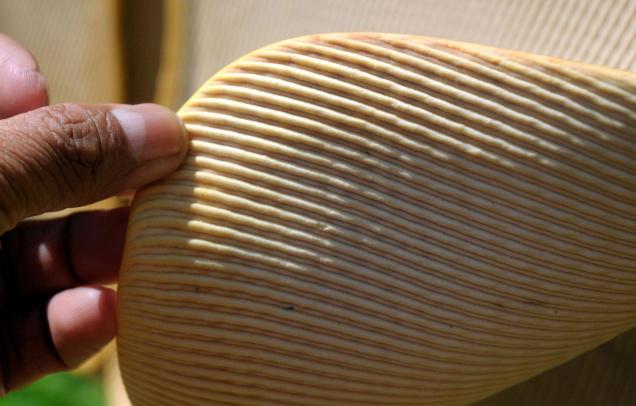 The new TrueWeigh continuous blender from Conair can be configured to handle from 2-6 different components in total throughput ranges
The new TrueWeigh continuous blender from Conair can be configured to handle from 2-6 different components in total throughput ranges
of up to 700 lb/hr (320 kg/hr) or up to 3000 lb/hr (1365 kg/hr). Ingredient hoppers and dispensing augers can be sized to deliver any amount up to the maximum or as little as ¼ lb/hr (115 g/hr) with metering accuracy within 0.5% of setpoint, depending on the material.
The manufacturer of auxiliary plastics machinery, headquartered in Cranberry Township, PA, says its cascade mixing technology leads to a very homogeneous blend, even when additives need to be dosed in very small quantities. This makes the unit especially interesting for extrusion applications where an accurate blend of sometimes-dissimilar ingredients is critical. Conair in recent years has developed a wide range of machinery specifically marketed to plastics extrusion processors. The new blenders make use of weighing and control technology developed as part of the TrueWeigh gravimetric extrusion line control system Conair introduced in 2009 (scroll down on this article, our NPE09 preview, to read our initial report on these).
“What makes this gravimetric continuous blender different from batch blenders is that all ingredients are dispensed simultaneously at the desired rate,” explains Alan Landers, product manager. “Different materials flow together out of the blender and into the extruder or a holding bin. In batch blenders, ingredients are dispensed one at a time into a mixing chamber where they are combined by mechanical agitation before being dumped from the blender. This works quite well in applications involving similar materials – virgin pellets and masterbatch pellets, for instance – and relatively large quantities of minor ingredients. However, when materials of different particle sizes and bulk densities are involved, there is a limit to the uniformity achievable with mechanical agitation. With continuous cascade mixing, if there is supposed to be just a few pellets of color or additive in a pound of virgin, then that’s exactly what you get.”
The blenders are available in two standard configurations: a stand-mounted unit that dispenses blended material into a holding bin, or a machine-mounted version. The latter includes an integral TrueWeigh hopper to control and maintain the desired weight per hour or weight per length extruded regardless of changes in process conditions. The ingredient hoppers (up to six) are mounted on a load cell that reads the loss-in-weight of material as it is dispensed. An inclined auger moves each ingredient from the individual hoppers into a central TrueWeigh hopper above the machine feedthroat. As material flows into the extruder, the TrueWeigh hopper measures the loss in weight. Its control unit can be linked to the extruder screw drive to maintain a specified weight/time throughput. The same control system also governs the speed of the dispensing augers under each ingredient hopper.
The flow rate of each ingredient is controlled by the diameter and rotational speed of the inclined auger under each material hopper. Major changes in metering volume are made by changing auger screws, which are available in diameters from 0.5 to 2 inches (1.25 to 5 cm). Fine adjustments to output are made by the blender control and a motor that drives the auger at a variable speed. Conair claims that unlike some competitive continuous blenders, in which both the motor and the auger need to be changed frequently to achieve rate adjustments, its unit only needs a single variable-speed motor. This technique allows for a speed range of a single auger to be 200:1.
The TWB continuous blender uses the same kind of PLC-based control as other Conair extrusion control units. To enter a blend recipe, a user enters a number of each ingredient representing the percentage of the total recipe and the control automatically sets and maintains the proper ratio regardless of changes in throughput. It can store the set-up parameters for up to 250 named recipes.
Source : www.plasticstoday.com





